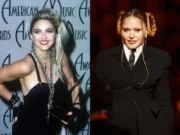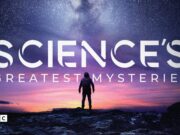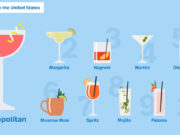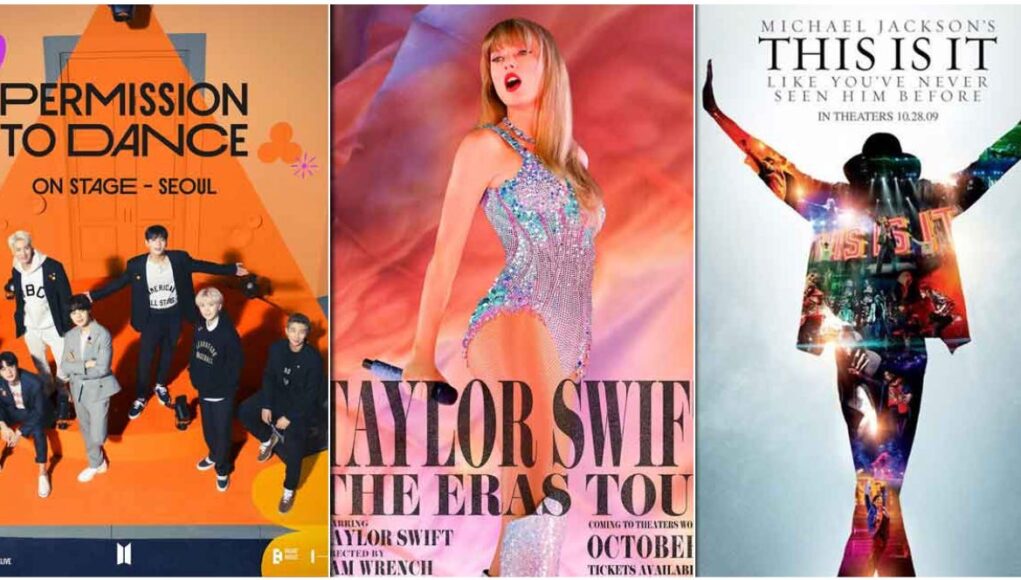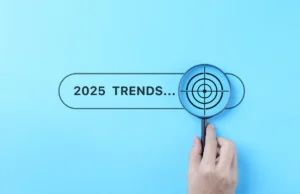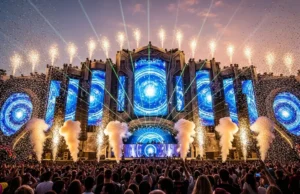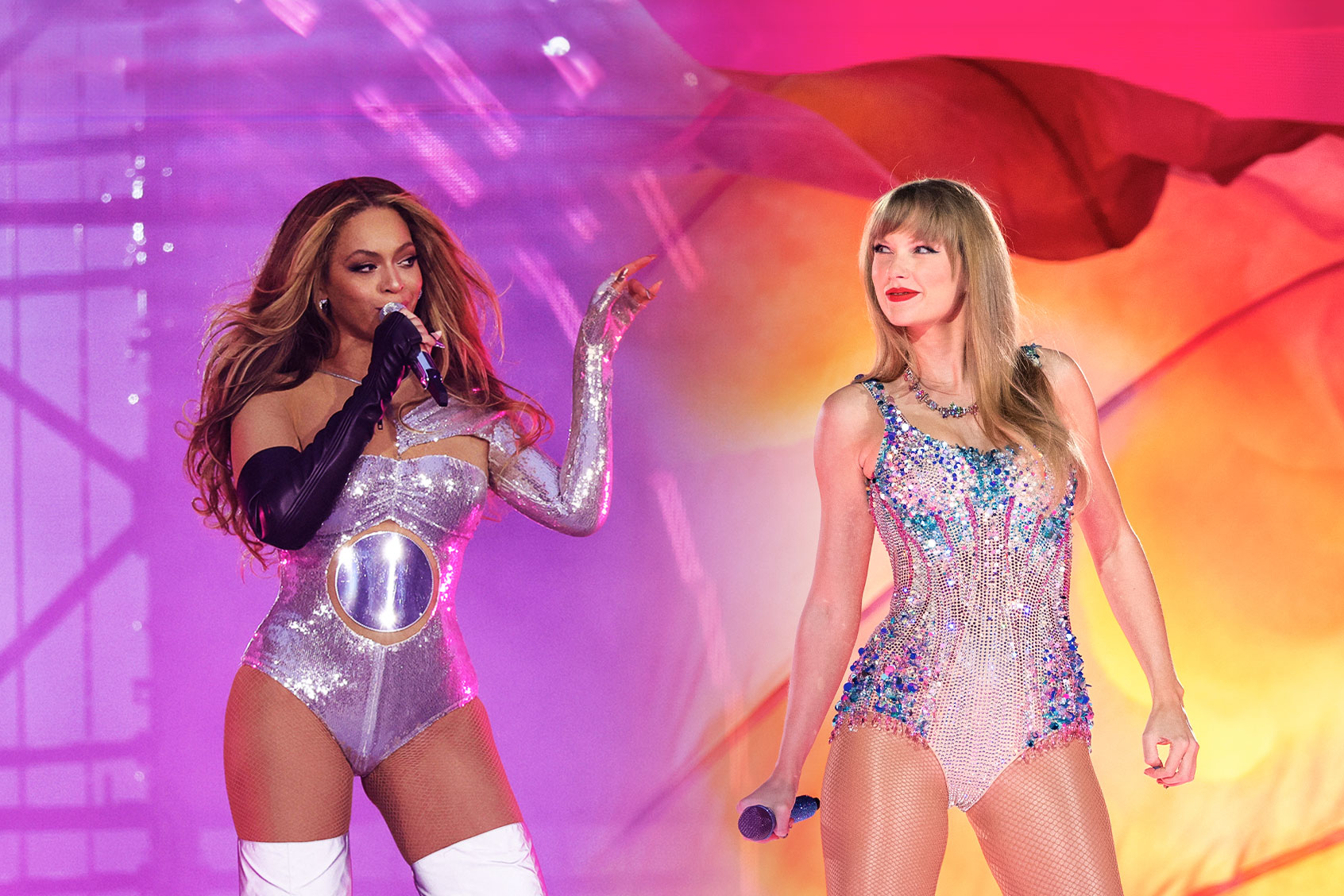
When a Tour Becomes a Theater Event
For decades, concert films lived in a niche corner of cinema beloved by superfans, ignored by everyone else. That era is over. In the last few years, live concert recordings and music documentaries have crossed into the mainstream with packed screenings, blockbuster-level social buzz, and repeat viewings that feel more like a tour stop than a typical movie night. What changed? In short: fan culture matured, streaming rewired our attention, and studios finally understood that live music on a massive screen is not just content—it’s an event.
This piece explores why concert movies are booming, how artists and studios engineer the hype, and what this hybrid format means for the future of both music and cinema.
1) Why Concert Movies Boom Now
A perfect storm of trends converged:
- Fandom as community: Fans don’t just consume; they gather, organize, and celebrate together. A cinema becomes a safe, shared space to sing, dress up, and relive a tour.
- Pent-up demand for “live”: After years of disrupted tours and limited travel, audiences crave collective experiences.
- Event cinema economics: One weekend of limited screenings can outperform months of slow theatrical runs—especially when tickets are premium-priced.
- Social media flywheel: Clips from the big screen generate new clips for TikTok and Instagram, which sell more tickets and streams.
- Audio/visual upgrades: Modern theaters deliver thunderous bass, crisp vocals, and towering LED visuals—closer to an arena than a living room.
2) The New Playbook: How Artists Turn Films Into “Tour Part II”
Today’s concert film isn’t a dusty edit of a single night. It’s a carefully designed second act for the tour:
- Scarcity: Limited screenings, special fan nights, and collectible posters turn attendance into a flex.
- Interactivity: Dress codes, friendship bracelets, glow sticks, and lyric-on-screen sing-alongs transform the room into a mini-stadium.
- Merch moments: Exclusive cinema-only drops (lanyards, pins, photo cards) make the theater feel like the arena concourse.
- Multiple cuts: Deluxe edits, extended songs, or alternate setlists entice repeat viewings.
- Staggered windows: A strategic path from theaters → PVOD → streaming keeps the buzz alive for months.
3) Anatomy of a Great Concert Film
What separates a timeless concert movie from a forgettable recording?
- Narrative spine: Even without a voiceover, the film needs a story—opening energy, mid-show intimacy, a knockout finale.
- Cinematography with purpose: Wide shots to feel the scale; steady cams and crane shots to capture choreography; intimate close-ups to reveal the artist’s micro-expressions.
- Editorial rhythm: Cuts should breathe with the music—let the chorus land, don’t over-slice a guitar solo.
- Sound that hits: Multitrack mixes engineered for theaters—kick drum you feel, vocals you can sing with, crowd ambience that wraps the room.
- Fan perspective: Reaction shots matter. They remind viewers that this isn’t just performance—it’s communion.
4) Concert Film vs. Music Documentary (and Why Both Win)
While concert movies focus on the show, music documentaries supply context: the grind of rehearsals, the politics of setlists, the emotional cost of touring. Released in tandem, these formats feed each other. The doc deepens the myth; the concert film delivers the spectacle. Together, they extend an album’s lifecycle like deluxe editions and remix drops once did.
5) Streaming’s Role: From “Watch Later” to “Watch Together”
Streaming platforms supercharge reach, but they don’t recreate the cinema ritual. Theaters have learned to position themselves as the first and best way to experience the show. Streaming then becomes the archive—perfect for freeze-framing easter eggs, learning choreography, or practicing for the next karaoke night. This two-step model (event first, stream second) turns a single tour into a year-long content universe.
6) The Business Math (Simplified)
Concert movies flip the usual risk profile:
- Lower production risk: You already proved demand with a sold-out tour.
- Higher per-cap spend: Premium tickets + concessions + limited merch.
- Marketing tailwinds: Fandoms do heavy lifting organically—fan edits, outfit inspo, countdown posts.
- Evergreen catalog value: Once captured, the performance keeps earning across windows.
For artists, it’s not just revenue. It’s brand equity—a definitive visual record that cements an era.
7) How Fans Experience It (and Why They Come Back Twice)
A great concert film screening feels like a reunion show. People arrive in era-themed outfits, film TikToks in the lobby, trade bracelets or photo cards, and sing the bridges like they’re back in row 12. The emotional payoff isn’t just nostalgia; it’s belonging. That’s why repeat viewings aren’t weird—they’re part of the ritual.
8) The Craft Behind the Curtain
- Pre-production: Camera maps, shot checklists per song, color pipeline planning, vocal mic isolation strategies, wardrobe continuity.
- Live capture: Redundancy on everything—dual recorders, backup power, mirrored media.
- Post-production: Colorist passes to preserve skin tones under LED walls, dynamic range decisions so highlights don’t clip, and surround mixes that keep vocals forward without crushing the crowd.
- Accessibility: Subtitles for lyrics, descriptive audio tracks, and color contrast considerations broaden who can join the party.
9) Concert Movies as Cultural Time Capsules
Beyond fandom, the best films capture the look and language of a moment: choreography trends, stage design aesthetics, fashion silhouettes, even memeable reaction shots. Ten years later, these movies don’t just replay a setlist; they teleport you back to the vibe of an era.
10) What’s Next: Hybrid Premieres and Global Fan Nights
Expect synchronized “worldwide fan nights,” where cities start at the same UTC time; more theaters allowing standing zones up front; curated double-features (iconic past tour film + new release); and AR-driven lobby installations where fans step into a virtual stage for photo ops.
Quick FAQ
Are concert movies just for superfans?
Not anymore. Smart edits, premium sound, and social buzz make them fun even if you don’t know every B-side.
Is the stream “as good” as the theater?
It’s different. Streaming is intimate and rewatchable; theaters deliver chest-rattling bass, a massive image, and a room full of people singing with you.
Why do some screenings feel like a party?
Because they are. Theaters increasingly brand certain showtimes as sing-along or “dress-up” sessions. It’s intentional—and it works.
Concert movies have evolved from archival curiosities into genuine event cinema—where music, community, and big-screen spectacle collide. They extend a tour’s life, deepen an artist’s story, and give fans a place to celebrate together. If you care about the future of either industry, keep an eye on this hybrid. It’s not a side project anymore. It’s a main stage.









